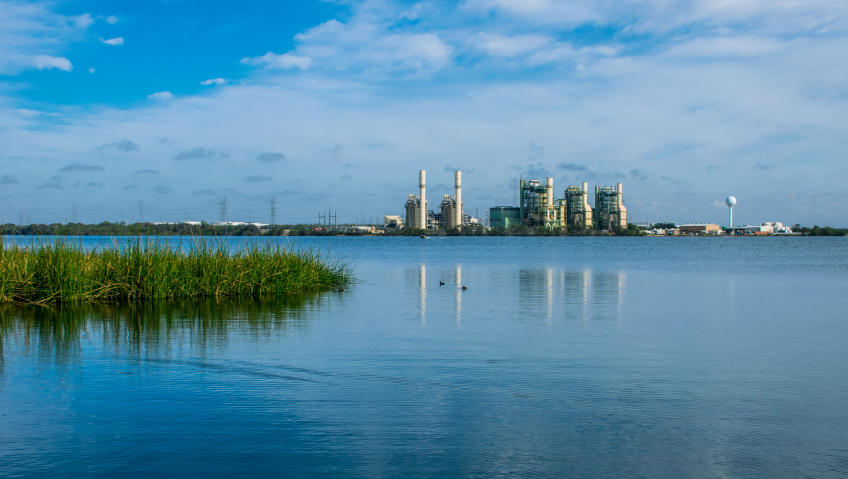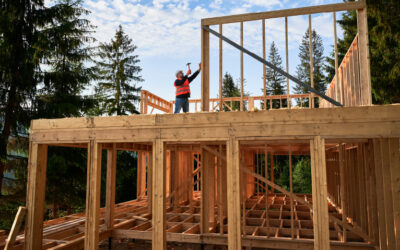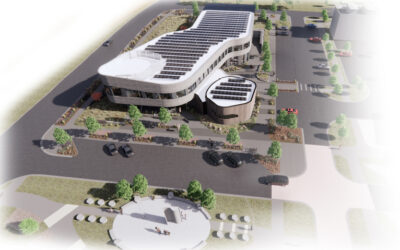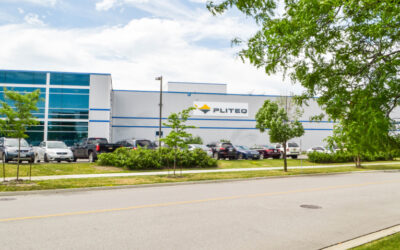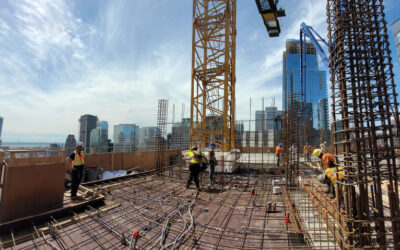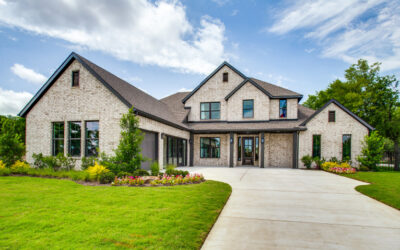Changing the way we think about insulation means understanding the value of manufacturing and construction with environmental stewardship in mind. Using the term “we” is a deliberate choice for Manitoba-based AMC Foam Technologies Inc., a family-owned and operated business whose challenge is a to bring greater understanding and education to both developers and consumers via its insulated concrete forms (ICFs).
Started in 1995 by the late Tom Smerchanski, AMC is committed to both energy efficiency and a faster building process, while meeting the North American building code’s goal of Net Zero and carbon neutral buildings by the year 2030.
Now run by Tom’s son Justin Smerchanski and a progressive management team, AMC’s long family history is one he’s proud to continue. Through innovation and technology they continue to develop EPS products that have changed how insulation is used in the building industry.
“My dad’s background was in insulation, working in a family business called Aerofoam prior to AMC for just over a decade,” he shares. “My grandfather was involved with the business as well, and his father’s brother Mark. So, our family business started in insulation and then along came AMC.”
The company commenced manufacturing from an 8,000-square-foot building with two employees that are still working with the company today. AMC continued to grow, eventually moving to 10,000 square feet building on Paramount Road. At that time, it had three employees, one block moulding machine and was contract moulding for a national ICF company. In 2002 AMC, together with four other EPS moulders, formed a consortium and developed the LOGIX ICF brand with manufacturing and distribution in both USA and Canada.
“Everyone wore multiple hats and did whatever needed to be done to grow the business,” explains Smerchanski. In 2013, AMC moved to its new state of the art 115,000 square foot building in Headingley, Manitoba and today employees in excess of 60 people.
AMC’s “bread and butter” remains its insulated concrete forms – LOGIX ICF, based on the concept of interlocking blocks that create a quick-building, long-lasting, soundproofed, energy-efficient wall system which is fire rated for up to four hours. In terms of being environmentally conscious, ICF also helps conserve natural resources by promoting sustainable, green building practices, conserving natural forest resources, and reducing fuel consumption.
While AMC originally started as a contractor moulder for insulated concrete forms, the company has diversified and now manufacturers a variety of other polystyrene insulation products to service the needs of the of the construction industry.
“LOGIX is an advanced building system probably more advanced than its time,” says Conrad Hoeppner, Vice President, Sales. “The codes and housing construction practices are really just catching up to that now. In the meantime, we have also gone one step further: we are changing the way we think about insulation in terms of all six sides of the building and not just the four outer walls. We now also have more advanced insulation for the roof and the floor.”
Changing how the world thinks about insulation means embracing the complete building envelope — not just a highly advanced wall system, but floors and roofs as well. The most recent example of AMC Foam’s capabilities is a seven-storey ICF apartment block at 30 University Crescent in Winnipeg. The apartment block features all LOGIX ICF exterior walls, and interior demising concrete insulated walls between the suites. Concrete interior demising walls mean that in addition to being highly energy-efficient, each suite is very quiet, and tenants cannot hear their neighbours.
“Normally a developer or general contractor would see a building of that kind – a concrete insulated building – and it would be a premium project and they would expect to pay more,” explains Hoeppner. The real story behind this job is that the apartment building was completed ahead of schedule and under budget. Move-in was several weeks ago, and at that time they had only three suites vacant out of 104 available.
According to Hoeppner, the building’s owner says in comparison there is a relatively new multi-storey apartment block down the street constructed from wood, but tenants are choosing the ICF concrete building instead because of the quality of the build, its energy efficiency, and its sound proofing. “That really speaks to the economics of such a building,” he says. “It was constructed under budget, it has a premium energy performance rating and people want to live in it.” That all makes sense to a developer.
Because of these benefits, other contractors and developers are taking notice, which will lead to future, similar projects down the road.
ICF is so specialized that it is considered a revolutionary product. When you build with LOGIX ICF, AMC works with the developer, contractor and installer providing training and guidance through the whole process from design to installation.
“We consider ourselves more than a manufacturer, especially the last half-decade,” he adds. “We pride ourselves on being more than that. We support our customers with marketing. We have got five drones and we’re constantly stopping by the projects that involve our products, and just help out anyway we can. We feel like together we are strong. Our success is delivered through transparent communication, shared goals, and mutual support.”
Despite the proven success and abilities of ICF, Hoeppner says one of the biggest obstacles is still education within the industry. “We’re salespeople. We make insulation, but we really see ourselves as more than that. We’re advocates for better construction.”
Hoeppner’s favourite analogy comes from his uncle who works as a mechanic. “He says he can’t afford to use low-grade gas and always buys premium, because he knows that the premium gas makes his car drive further and there are fewer maintenance issues. The rest of us do not know that because we are not in the business. He’s on the inside; he understands the mechanics and knows what the gas does.”
In the construction business, AMC knows what a premium performance building does for the market, what it does for the occupants and the owner – but if you are not personally in that space and do not talk about these things, you will likely want a bare-bones building to put on the market to make money. “That’s our biggest challenge is just to get the word out,” says Hoeppner.
To this end, AMC communicates with architects, engineers, and developers, going to great lengths to conduct studies and performance modelling of the actual wall systems and what they do for the enhancement of a home. Getting that message out to the builders and buyers can be a challenge, although there are more people onboard now. When Hoeppner entered the business 17 years ago, there was much more resistance.
“It was really a handful of fringe voices like mine in the marketplace saying, ‘build like this because it’s better for you,’ but now you see a real push even from government saying, ‘by 2030 we’re going to build up to Net Zero standards’ and that’s unheard of in the business,” he says. “A lot of people are still wrapping their heads around that. How are they going to accomplish that? It takes advanced framing and construction, which is slow to change. Change is difficult for most people.”
That change will also come due to the current state of lumber, he adds, with costs shooting up several hundred percent recently. Hoeppner says he has daily conversations with developers about converting from lumber to LOGIX to save money and energy.
“It’s not a long-term investment that pays off in 30 years — it actually pays off now, the moment you move in, and it doesn’t cost multiple times more to build this way,” he says. “I live in a LOGIX house, for instance, and we just need more people to tell the story about how it feels and how it functions. As the word gets out, people understand that it’s real and then we get more of this changeover in the way we think and in the way we build.”
As for other challenges, COVID, of course, has played a significant role this past year, but not as significantly as it could have. With safety implementations in place, construction and quoting growth remained steady within AMC’s active areas in central Canada and the United States, including Manitoba, Saskatchewan, Minnesota, North Dakota, South Dakota, and Wisconsin. Smerchanski says the bigger challenge remains with production planning, raw materials and longer lead times. But he remains positive about the company’s future.
“We’re a true family business,” he says. “My dad did not take over his father’s business; he started his own. I am a second-generation owner, and we try to wow every customer. We put our customer at the centre of everything we do. We treat them like family and try to understand their needs and always exceed expectations.”
Activities like monthly barbecues and recognizing everyone’s birthdays is an important part of AMC’s family culture. “Titles are one thing, but we feel like everyone has an open door and we all depend on each other. We’re all pushing for the same goal,” he says, something his father would support.
“It’s a blessing to continue on with his legacy and push for the goals that he had,” says Smerchanski. “The company’s been growing every year and we feel like we’re in a really good industry at a good time. We always try to find a better way. We promote a culture of innovation and continuous improvement, so we’re constantly seeking personal and professional growth.”
While AMC embraces its strong family history and commitment to providing a quality, proven product, its dedication to a long lasting, successful future of productivity, customer satisfaction and protecting the environment is also a top priority.
“We need to be doing things better because conservation of energy is a hot topic. It fits so well into climate change goals,” says Hoeppner. “We’re reducing waste and we can actually get a better home, a better building for the same price – and that’s the exciting message.”







